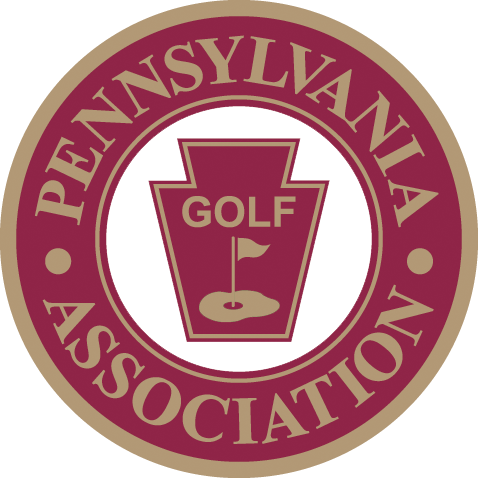Green Valley Country Club
| Green Valley Country Club 201 West Ridge Pike Lafayette Hill, PA 19444 www.greenvalleycc.org Architect: William S. Flynn | |||||||||||||||||||||||||||||||||||||||||||||||||||||||||||||||||||||||||||||||||||||||||||||||||||||||||||||||||||||||||||||||||
| |||||||||||||||||||||||||||||||||||||||||||||||||||||||||||||||||||||||||||||||||||||||||||||||||||||||||||||||||||||||||||||||||
| Golf Professional | John J Cooper, Jr. | (610) 828-2896 |
| General Manager | Harry Ginther | (610) 828-3000 |
| Superintendent | Matthew Herrmann | (610) 750-9202 |
Course Slope & Ratings
| Green Valley Country Club Tees | Front 9 | Back 9 | Course | ||||||
|---|---|---|---|---|---|---|---|---|---|
| Rating | Slope | Rating | Slope | Yards | Rating | Slope | Par | ||
| Red | Male | 31.5 | 117 | 32.5 | 122 | 4810 | 64 | 120 | 71 |
| Gold/Red Combo | Male | 32.2 | 118 | 33.3 | 124 | 5134 | 65.5 | 121 | 71 |
| Gold | Male | 33.4 | 124 | 34.6 | 129 | 5680 | 68 | 127 | 71 |
| White/Gold | Male | 34.2 | 127 | 35.2 | 132 | 6003 | 69.4 | 130 | 71 |
| White | Male | 34.9 | 130 | 35.9 | 135 | 6302 | 70.8 | 133 | 71 |
| Blue/White Combo | Male | 35.7 | 132 | 36.4 | 138 | 6601 | 72.1 | 135 | 71 |
| Blue | Male | 36 | 135 | 36.8 | 138 | 6744 | 72.8 | 137 | 71 |
| Red | Female | 33.7 | 120 | 34.6 | 124 | 4810 | 68.3 | 122 | 71 |
| Gold/Red | Female | 34.5 | 123 | 35.5 | 127 | 5155 | 70 | 125 | 71 |
| Gold | Female | 37.1 | 134 | 35.8 | 129 | 5680 | 72.9 | 132 | 71 |
| White | Female | 37.7 | 137 | 38.7 | 141 | 6302 | 76.4 | 139 | 71 |
Directions
Club History
When some 150 men gathered on Dec. 8,1919, in Center City to organize the Green Valley Country Club, they were not starting from scratch. The leaders of this group of business and professional men, most of them in their 30s and 40s, had already acted to purchase the manor house of Harry Sacks, at Ridge Avenue and Livezey Lane, in Roxborough, Pa., plus approximately 145 acres of adjoining wooded and rolling—no, make that hilly—land to the north and south. Almost none of the original members had ever played golf. At that meeting Harry Sacks was elected president of the new club. Named to the board of directors were Harry Shapiro, David Phillipp, Samuel Seltzer, and Alexander Seltzer
Membership in the new club was optimistically limited to 350. A corporation called Green Valley Realty Company was formed, and each club member was required to buy at least $500 worth of shares in the company. The club hired a manager at a salary of $5,000 per year. Despite their inexperience, as the club history points out, "the officers, directors and committees proceeded to plan and build a golf course over those 145 acres of wooded mountains, stony terrain, and running creeks, to reconstruct the Sacks Mansion into a Club House, and to convert the Sacks stable into a locker room. Sixteen months later, in April 1921, the job was done and the golf course and the Club House were opened."
Say what you will about those who laid out this 18, they were certainly bent on challenging their clubmates. And what could have been more formidable than a water hole to start the round! The very first shot called for a forced carry over a pond about 50 yards wide. Picture, if you will, the succession of neophytes edging fearfully up to the markers, then mournfully plopping brand new $1 golf balls, one after another, into the water. Golf at Green Valley commenced not with a bang but with a splash.
But the rough edges—on both the course and the players—were gradually smoothed away, and golf became for Green Valley members a source of keen enjoyment. Interest in the game grew with the heightened prosperity of the 1920s. George Griffin, who would quickly establish himself as one of the best players among the Philadelphia club professionals, was named head professional early in 1924. Various tournaments for women as well as men dotted the calendar. Club social events consistently attracted a large turnout (in 1922 the board borrowed $35,000 in order to build an auditorium addition to the clubhouse), and though this was the Prohibition era, you would scarcely have known it.
In the spring of 1929, with good times rolling giddily along, the clubhouse facilities were deemed inadequate. Plans for an ambitious new clubhouse were drawn up. It would be located in the middle of the property, near the 10th tee. Estimated cost of construction was $200,000. Members immediately subscribed to $150,000 in mortgage bonds. During a special meeting of the membership in September 1929, all plans were approved. On Oct. 29, the stock market nose-dived. Bust followed boom. Another special meeting of the membership was called for October 31. At it a resolution was presented to close the doors and dissolve the club. The resolution was defeated. The club met again just a week later. The same resolution was put forth. Again it was defeated. A "never say die" attitude, perhaps bred by nearly ten years spent battling that implacable golf course, kept Green Valley alive. Now the club would hunker down as the Great Depression got its stranglehold on America.
